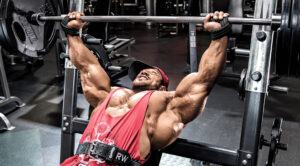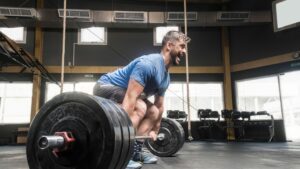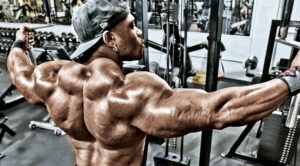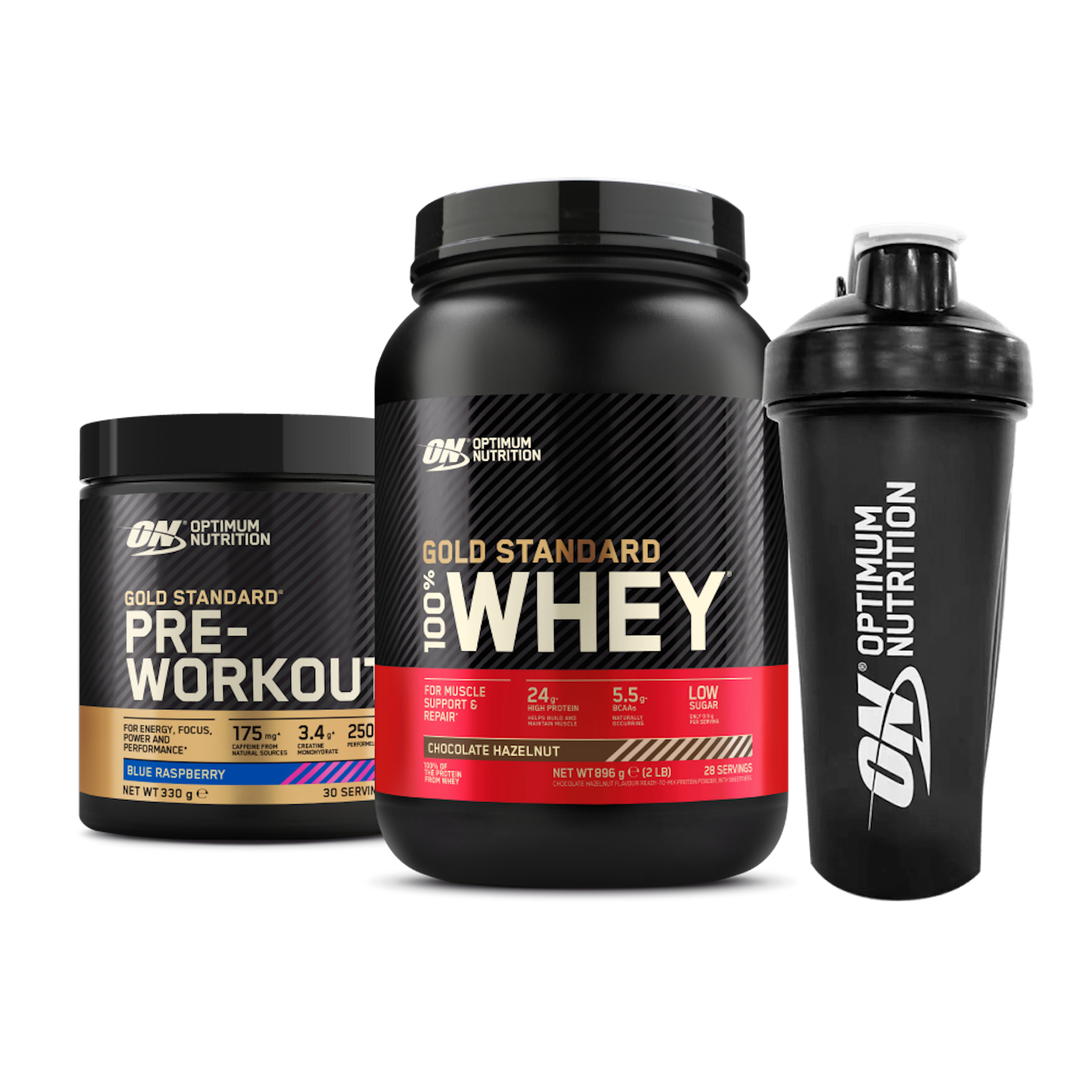Proper lifting techniques and body mechanics are essential for long-term joint health, performance, and physique improvements. Unfortunately determining whether or not your lifting mechanics are spot on is never an easy feat as it often entails hiring a competent coach with a keen eye for spotting technical deficiencies. With that said, here are 20 tell-tale indications you can use to determine whether or not your form is due for an overhaul.
1- Your Joints, Tendons, And Ligaments Always Hurt
Besides producing motion and propelling our bodies through space, one of the primary roles of our skeletal muscles is to absorb force. If the muscles are not functioning properly and biomechanics are amiss then the muscles will be unable to adequately perform their all-important shock-absorbing capabilities.
Unfortunately, something must absorb these incoming forces and if the muscles are unable to do this to their fullest extent then joints, tendons, ligaments, and connective tissue will be required to assist. As a result, this produces inflammation and structural trauma to the surrounding joints and connective tissue. And regardless of what you’ve heard, heavyweight does not cause joint pain, but lousy form certainly does. Learn to clean up your form and mechanics and watch your musculoskeletal pain disappear.
“Heavyweight does not cause joint pain, but lousy form certainly does. Learn to clean up your form and mechanics and watch your musculoskeletal pain disappear”.
2- You Overtrain Easily
Overtraining is often misdiagnosed and confused with improper training, with the latter being much more common. In fact, most scenarios I’ve witnessed where an athlete demonstrates “common signs of overtraining” have simply been a case of faulty movement mechanics and muscular dysfunction. Poor form and technique wreak havoc on joints, hormones, and overall physiology oftentimes significantly contributing to traditional signs of overtraining and over-reaching. In contrast, proper muscle function and optimal body mechanics allow movement to occur that is therapeutic to the body making your chances of overtraining much more unlikely. In other words, the faulty movement must be used sparingly and allocated very strategically over the course of a training cycle whereas proper movement requires no such limitations since rationing therapeutic movement is unnecessary.

3 – You Frequently Train With Lifting Accessories
If you typically use a lifting belt, lifting wraps, straps, weightlifting shoes, or any other training accessory other than lifting chalk, chances are you demonstrate various levels of dysfunction throughout your body. These tools act as a crutch offering support, tension, and assistance that your muscles should be providing. When the muscles forfeit these responsibilities even just slightly, natural recruitment patterns are altered, inevitably leading to various forms of movement deficiencies.
4 -You Feel The Need To Foam Roll And Stretch Frequently
This is something I’ve addressed in the past but it’s worth repeating. If you have to foam roll, stretch, massage, and perform various forms of soft tissue work on a consistent basis this is a strong indication your movement patterns are producing inflammation, tightness, and muscular spasticity. Contrary to what the fitness industry would have you believe, this is anything but normal and should never be accepted as common practice. Performing these various forms of “supposed” therapeutic modalities is a common case of treating the symptoms rather than the cause. Fix your movement patterns and watch the symptoms fade.

5- You Frequently Contract Upper Respiratory And Bacterial Infections
If you seem to contract a common cold or bacterial infection every few months, more than likely your muscle function is a contributing factor to varying degrees. Although there’s limited research to support this claim, after 15 years of hands-on training experience with a variety of clients and athletes, I’ve seen a very strong correlation between movement patterns and immune function. The better your mechanics, posture, and muscle function are, the more efficient your body is at providing immune support and fending off bacteria as the body is functioning as a healthy organism internally and externally.
Related Articles: The “5 Mistakes” Most Young Bodybuilders Make When Trying “To Build Muscle And Physical Strength”
 6 -You’re Commonly Plagued With Indigestion That Seems To Worsen After Training.
6 -You’re Commonly Plagued With Indigestion That Seems To Worsen After Training.
It’s quite common for individuals who strength train consistently to suffer from indigestion. Similar to overtraining and upper respiratory infections this should not be considered the norm. In fact, research is clear that exercise should cause up-regulation of digestive enzymes in the gut. Faulty muscle function not only disrupts your body’s enzyme production and chemical environment but it also contributes to an autonomic nervous system imbalance between the parasympathetic and sympathetic divisions. In these instances, the sympathetic nervous system operates in constant overdrive which further disrupts digestion, breathing, immune function, and overall physiological function.
7 -You’re Always Sore
Experiencing periodic levels of low-grade muscle soreness is something every trainee gets accustomed to as it’s simply par for the course during our iron game journey. However, consistent levels of extreme muscle soreness that last several days or longer oftentimes indicate that body mechanics are amiss to varying degrees. Proper movement mechanics involve heightened levels of motor control and proprioceptive feedback. When we lack motor control and proprioceptive feedback we’re more likely to collapse during the eccentric phases of exercises simply because we’re unable to maintain structural rigidity and intramuscular tightness. As a result, this overstretches our muscles and musculotendon units thereby creating excessive micro-trauma and muscle damage. Oh and just in case you were wondering, no this does not lead to additional muscle growth. In fact, research is now showing that extreme soreness can actually lead to atrophy, not hypertrophy due to our inability to recover from such inordinate levels of microtrauma.
8- You Can Only Lift Heavy Very Occasionally
If training heavy and/or intense takes its toll on your body dictating that you can only train with such intensities periodically then chances are you’re form is actually what’s causing these negative effects, not the heavyweight itself. In fact, lightweight combined with faulty mechanics can cause exponentially greater damage to the body than heavy loads combined with textbook form. Rather than blaming heavyweight on why your body hurts, examine your form and body mechanics. Once you learn to dial in your technique, your muscles can be used to absorb forces and take the brunt of the load. However if your biomechanics are faulty then regardless of the weight you select, your tendons, ligaments, joint, and connective tissue will be required to handle a significant portion of the incoming forces resulting in obvious physiological consequences.
“Lightweight combined with faulty mechanics can cause exponentially greater damage to the body than heavy loads combined with textbook form”.
9 -Eyes-Closed Movements Feel Impossible And Dangerous
This is something I’ve touched on in past articles but it’s worth repeating. If you’re unable to perform eyes closed movements with substantial loads on traditional exercises such as squats, presses, pulls, and deadlifts, more than likely your proprioceptive, somatosensory feedback, and kinesthetic awareness are greatly lacking. These physiological attributes are critical not only for maximizing strength, force production, and performance but also for optimizing body mechanics and minimizing injury. If closing your eyes feels like an unfeasible task on a majority of your heavy strength training exercises causing you to feel disoriented and discombobulated it’s time to work on your mechanics and improve your form before a serious injury sidelines you.
10 -You Always Wear Thick-Soled Shoes When Training
Foot and ankle activation is a critical component of neuromuscular efficiency and motor control. In fact, without proper foot and ankle mechanics, it’s literally impossible to perform any lower body movement such as squats, deadlifts, and lunges, correctly. Unfortunately, most individuals fall into this pitfall as they either wear thick-soled shoes when training (which act as a training crutch), and/or they do little if anything to strengthen their feet and ankles. If this describes you then it’s pretty much guaranteed that these factors are contributing to a variety of compensation patterns and movement dysfunction throughout your body. Work on strengthening your feet and ankles and watch your body mechanics, particularly on lower body movements improve almost immediately resulting in significantly reduced joint pain.
Related Articles: Build Up Extreme Muscle With This “8 Week Chest Mass-Building Hypertrophy” Workout Pt.2
Check Out Our List Of The Best Supplements For Building Muscle, Shredding Muscle, Recovery, And Great Health, and Wellness Products! Purchase ifbnewsfeed.org‘s apparels Here: ifbnewsfeed.org
 11 -You Rarely Feel Or Apply The Muscle-Mind Connection
11 -You Rarely Feel Or Apply The Muscle-Mind Connection
Whether you want to admit it or not the muscle mind connection is real. In fact, it’s even been substantiated by scientific research studies. While this doesn’t require every lifter to use inordinately light loads and enter a Zen-like state of mental concentration to hone in on their targeted musculature, it does mandate that a certain level of muscle-mind connection be present during most lifts. Ironically the more dialed in one’s lifting mechanics are, the more likely they are to feel the appropriate muscles working as proper technique inevitably produces a solid muscle mind connection with strong neural connections. If you mindlessly and haphazardly perform movements with little focus as to what muscles are being worked or rarely feel the targeted muscles being stimulated, chances are your form and body mechanics need to be attended to more rigorously.
12- You Feel The Secondary Muscles More Than The Primary Muscles
If your secondary or assistance muscle groups tend to feel a greater burn, pump, soreness, and overall activation than the primary muscle groups do for a particular movement, then it’s time to analyze your form. For instance, it’s not uncommon that lifters of all levels will complain that their shoulders feel more engaged than their pectorals when performing chest presses. Similarly, many individuals will complain that their low back muscles are exponentially more fatigued than their lower body during deadlifts and squats, or that their biceps rather than their upper back muscles feel pummeled after rows and pullups.
If this describes you then don’t fall into the mindset that you have some weird genetic mutation that‘s keeping you from honing in on the appropriate muscles. Instead, the solution lies in your form, mechanics, and muscle mind connection. Lighten your loads and clean up your form then watch your primary muscles get absolutely thrashed during your next workout.

13 -You’re Warm-Ups Last As Long As Your Workouts
There’s a common trend in the fitness industry where so-called “advanced trainees” feel as though they’ve earned the right to program arduously long warmup protocols that literally last as long if not longer than their actual workouts. While many of these trainees are quick to highlight their need for such extended warm-up protocols as a means of preparing their bodies for the heavy loads their years of dedicated training has allowed them to progress to, this is oftentimes a cover-up. In reality, most of these trainees and athletes are so stiff, tight, and sore, that unless they perform these extended warmup periods they’re likely to induce some form of significant injury. In fact, if you watch them perform their resistance movements you’ll notice that they rely on excessive levels of momentum, shifting, cheating, bouncing, and various movement aberrations to enable them to complete their heaviest sets.
With that said, if you’re set on using such aberrant technique and dysfunctional body mechanics then yes I strongly encourage you to continue using exaggerated warm-ups as these prolonged periods of preparation may in fact be the very thing standing between you and a severe career-ending injury. However, if you’re a bit more intellectually savvy you’ll understand that such extended warm-ups are entirely unnecessary if in fact your body mechanics and technique are proper. If you need longer than 10 minutes to warmup, chances are your form and body mechanics are amiss. Stop adding more and more stretches, corrective movements, dynamic activation drills, and warmup drills and start working on your technique. You’ll not only minimize the duration of your workouts but most likely you’ll save yourself from having to visit your local orthopedic surgeon.
14- You Rush Your Workouts
Many lifters enter the gym with a sense of panic and hysteria feeling as though they need to cram as many sets, exercises, and training stimuli into their ritualistic training time slot as possible. If they’re not huffing and puffing throughout their workout or aren’t plastered to the floor at the end of their session unable to raise their half-dead carcass off the puddles of sweat they’ve so feverishly created, then they simply aren’t satisfied. If this describes you, it’s likely you’ve become overly obsessed with chasing fatigue rather than aiming for an effective training stimulus.
Related Articles: Build Up Extreme Muscle With This “8 Week Mass-Building Hypertrophy” Workout Pt.1
While it’s certainly permissible to blow yourself out periodically, consistently doing so will increase the likelihood that your form and mechanics gradually breakdown over time. Rather than attempting to give yourself exercise-induced cardiopulmonary failure each time you enter the gym, try dialing in your body mechanics and concentrating on stimulating the appropriate musculature. Not only will your physique improve to a greater extent but you’ll be surprised at how wiped out you are from using textbook mechanics. In fact, applying proper form to moderately heavy loads is one of the most intense forms of training you’ll ever participate in.
15 -You Aim For Quantity Over Quality
I’m not going to get into the whole CrossFit debate as there’s definitely multiple sides to the argument. However, it’s worth nothing that any athlete who focuses primarily on cramming more and more total volume of work into a given time block (increased training density) is definitely going to be at greater risk for technique and form deterioration particularly when it comes to large complex strength movements. That’s because you inevitably become concerned with numbers more so than your technique ultimately causing you to resort to any and all means necessary to get one more rep.
With that said, there’s nothing wrong with periodically trying to push the envelope and improve your training density. However, if you are going to consistently implement this training strategy then you’ll need to employ strategic phases into your program that emphasize purely mechanics and technique as a means of cleaning up any form aberrations that may have developed during your time constrained training phases. In fact the best CrossFit athletes will implement such training blocks into their weekly programs. If you’ve been sticking solely to training protocols that focus only on increasing your training density without implementing technique phases into your routine it’s time to reassess your form and body mechanics. More than likely you’ve developed some bad habits and various forms of muscular dysfunction that need to be addressed.
16- Your Form Sucks On Video
If you really want to get a read on your form, record yourself on video from multiple angles. Regardless of whether or not you’re an expert strength coach, anyone who’s spent at least several years consistently pursuing their strength training goals will have a solid idea of what proper form looks like from a visual perspective. More importantly, lousy form will look visibly obvious even to an untrained eye.
Look for glaring asymmetries, excessive momentum, postural aberrations (i.e. spinal flexion or extension), or any shifting and wiggling throughout the repetitions. Also, examine whether or not your form changes from the beginning to the end of the set. In addition, find a video of your favorite trainer, athlete, or strength coach demonstrating proper form then compare your video to theirs. Yes, there will be subtle biomechanical issues you won’t pick up on however you’ll most likely be able to address a majority of the larger and more obvious technique aberrations.
17 -You’re Obsessed With Progressive Overload
Progressive overload is a critical component of resistance training. Without it, it would be nearly impossible to gain significant levels of strength or size as it’s the cornerstone for what drives training success. However, rushing progressive overload is a surefire way to develop form and technique issues. Unfortunately, this describes many lifters as they feel so obsessed with demonstrating tangible progress at each workout that they’ll go to any and all lengths necessary to grind out that extra rep or additional load even if it means sacrificing technique.
However “strength progressions” that occur under the auspices of form degradation and aberrant mechanics are in fact pseudoprogression as the trainee did not gain true strength or size but simply became more efficient at cheating their way through the movement. In other words, they’re producing a false sense of progression. Simply put if you’re one of those lifters that feel compelled at all costs to demonstrate signs of progressive overload each and every workout, chances are that somewhere down the road you began sacrificing form and technique. Remember improving form and technical efficiency on a lift is one of the most effective forms of progressive overload there is. Focus on your form and technique and watch how naturally occurring progressive overload becomes.
 18 -You Rarely Perform Single Arm Or Single Leg Movements
18 -You Rarely Perform Single Arm Or Single Leg Movements
Many lifters are under the mindset that sticking solely to the big basic compound movements is all they need to maximize their physique and performance. While going heavy on the basic barbell movements and other bilateral exercises is sure to build significant mass and strength, there’s also a risk of developing asymmetries and imbalances. If you’ve been using predominately barbell or even bodyweight movements (i.e. weighted pushups) chances are you’ve developed various asymmetries and imbalances simply from allowing one side of your body to dominate the movement. Periodically including dumbbell, kettlebell, or single-limb movements into your routines is critical for not only exposing these issues but also for correcting them.
19 -You’ve Been Using The Exact Same Movements For Years
Sticking to the same lifts year in and year out can lead to a number of imbalances. While endless amounts of exercise variety are unnecessary, periodically switching up your movements or even adding very small modifications can help uncover various weaknesses, imbalances, asymmetries, and dysfunctional mechanics. For instance, many lifters unknowingly develop bad habits and form aberrations over the years on basic compound movements. Implementing new or unique exercises periodically into your routine forces you to move out of your comfort zone and learn the subtleties of that new movement. As a result this oftentimes exposes a number of activation deficits and faulty mechanics that you may not have ever tuned into had you not been forced to master a new exercise.
20 -You Experience More Soreness Near Your Tendon Insertions
As previously mentioned mild to moderate levels of soreness are acceptable. However, the location of the soreness on a particular muscle is also quite telling. Proper movement patterns and optimal biomechanics involve movements that produce ample tension and force across the entire joint and muscle. This is what I refer to as movement centration and is something that other strength coaches and trainers have touched on. If the technique is amiss then more tension will be placed across a particular area of the joint or muscle rather than distributing forces equally across the various structures. Besides producing a greater risk of injury, this also tends to produce more soreness across the tendon insertions rather than the actual belly of the muscles. There are two reasons for this.
First, faulty mechanics oftentimes involve overstretching the muscle (i.e. bouncing at the bottom of the movement) due to low levels of motor control and lack of intramuscular tension. This places excess stress across the musculotendon unit rather than the actual muscle itself. Secondly, faulty mechanics tend to place more tension towards the outer or end regions of the muscles which also happens to be near the tendon insertions. Here are 3 common examples:
1. Muscle soreness in the outer region of the pectorals near the shoulder tie in. This is quite common amongst individuals who excessively flare their elbows on bench press movements or collapse at the bottom position. Proper bench press mechanics using strong 90-degree joint angles will create tension and mild soreness throughout the entire region of the pectorals not just the outer portion near the tendon. Read more about proper upper body lifting techniques here.
2. Lat soreness towards the very top of the lat muscles near the insertion of the shoulder blades, teres major, and armpits rather than the actual belly of the lats. This is common for individuals who over-pull at the top of the pullups and lat pulldowns (i.e. using an excessive range of motion), and also overstretch in the eccentric position. Learning to optimize your range of motion and keeping your elbows tucked will target the entire musculature of the lats rather than just the very upper portion near the shoulders.
3. Extreme hamstring soreness near the lower regions of the hamstrings towards the knee joints. This is commonly associated with overstretching the hamstring tendon insertion on RDL’s and hip hinge movements that tend to occur either because the individuals kept their knees overly straight/locked or because the lifter tried to overstretch and use excessive ROM at the bottom position. Performing proper RDL’s with moderate knee bend and optimal ROM produces tension and moderate soreness across the entire backside including the whole musculature of the glutes and hamstrings not just the very lower portions of the posterior chain.
Not sure how to correct your form? Stay tuned for my eccentric isometric book coming out soon, that’s guaranteed to provide the technique overhaul your lifting form needs. In the meantime check out my eccentric isometric article’s here.
Related Articles:
- The Best Bodybuilding Tips “That Work For Both Men And Women” Including Beginners And Experienced Bodybuilders
- The Best “15-Minute Warm-Ups” To Speed Up Muscle Growth, Physical & Mental Strength, And Fast Recovery

- Hormone Replacement Therapy regimen For Men and women
- Hormone Blood Testing for Men (Bodybuilder Blood Testing)
- Shop Optimum Nutrition Energy: Anytime & Pre-Workout
For More News And Daily Updates, Follow IFBNewsfeed.Org on Facebook, Twitter, and Instagram. Comment, Like, And Share With Everyone Who May Need To Be Updated With The Most Recent Fitness/Bodybuilding/Powerlifting And CrossFit News.







